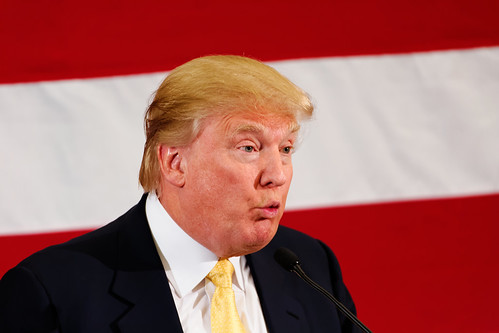Duluth, Minnesota (OpEdNews) September 4, 2019: In Olivia Fox Cabane's 2012 book The Charisma Myth: How Anyone Can Master the Art and Science of Personal Magnetism (Portfolio/ Penguin), she says, "Until the 1980s, in fact, many highly influential leadership thinkers, such as Peter Drucker, vehemently opposed both the study and teaching of charisma. Drucker frequently pointed out that the most charismatic leaders of the last century were Hitler, Stalin, Mao, and Mussolini" (page 220).
Like Drucker, Cabane in her 2012 book can be described as a leadership thinker. Like Drucker, she is addressing people in business organizations, although she occasionally mentions certain political leaders as exemplifying something she is discussing. Clearly leadership can and does occur in a great variety of contexts, not just in the context of business organizations and in the context of political organizations.
Cabane says, "presence turns out to be the real core component of charisma, the foundation upon which all else is built" (pages 5-6). In my estimate, what she means by presence is essentially what the American psychotherapist Carl Rogers (1902-1987) means by unconditional positive regard the attitude he urges psychotherapists to have toward a client in the context of psychotherapy.
The other two dimensions that Cabane sees as basic for charisma are what she refers to as (1) power and (2) warmth (toward us personally, or at least toward our kind, whatever that may be). She says, "'Fight or flight?' is the power question. 'Friend or foe?' is the warmth question" (page 5).
According to her, leaders project the three crucial aspects of charisma: presence, power, and warmth, consciously or subconsciously (page 6). But she also says that "charisma is the result of specific nonverbal behaviors" (page 4). Consequently, she devotes a great deal of attention to body language and nonverbal communication. For example, she even devotes a chapter to "Charismatic Body Language" (pages 143-164).
Cabane says, "Charisma gets people to like you, trust, and want to be led by you" (page 2). In my estimate, she seems to presuppose that you know something about the people you want to have like you, trust you, and be led by you. But she does not explicitly discuss this presupposition perhaps because she assumes that it is implied in the context of a given business organization.
Because her book is a self-help book for leaders in business organizations, Cabane devotes a chapter to the technique of visualization: "Creating Charismatic Mental States" (pages 67-97).
Now, Cabane routinely refers to accessing certain dimensions of our psyches and projecting them. However, whenever we project something that we have accessed from our own psyches, we do so in a given context. Then when other people in the given context respond to what we are projecting, they, in turn, are also projecting something from their psyches that matches what we are projecting.
For example, Trump projects whatever Trump projects, and his most ardent supporters match his projections from his psyche with similar projections from their own psyches. In this way, Trump and his most ardent supporters form a kind of mutual admiration society with one another.
Now, the late American Jungian theorist and psychotherapist Robert L. Moore (1942-2016) of the Chicago Theological Seminary worked out what he refers to as four kinds of archetypes of maturity in the human psyche:
(1) the Royal archetypes (King and Queen);
(2) the Warrior archetypes (masculine and feminine);
(3) the Magician archetypes (masculine and feminine);
(4) the Lover archetypes (masculine and feminine).
Each of us comes equipped with these four kinds of archetypes of maturity in our psyches. According to Moore, each gendered archetype of maturity has one optimal form, but two "shadow" forms. Each of the eight optimal forms is pro-social, but each of the sixteen "shadow" forms tends not to be pro-social.
(Note: You can view every article as one long page if you sign up as an Advocate Member, or higher).





